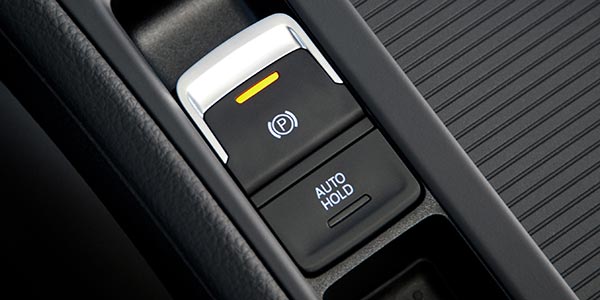On 2013 and newer Ford Fusion models, the parking brake uses rear calipers with electric motors to actuate the electronic parking brake (EPB). Putting the system into service or maintenance mode to retract the pistons is performed using a series of steps while sitting in the driver’s seat.
Activation
- Set the ignition to ON.
- Press and hold the accelerator pedal and place the EPB switch to the RELEASE (downward) position. Continue to hold the accelerator pedal and EPB.
- Set the ignition to OFF, then set the ignition to ON within 5 seconds. Continue to hold the accelerator pedal and the EPB switch.
- The EPB system will be deactivated, preventing parking brake application until service has been completed and maintenance mode has been deactivated. The yellow electronic parking brake indicator will be illuminated and maintenance mode will display on the message center.
- Set the ignition to OFF, then release the accelerator pedal and EPB switch.
When replacing rear brake pads in maintenance mode, the brake caliper piston must be compressed into the caliper housing. The brake caliper piston does not have to be rotated while compressing the piston.
Deactivation
Carry out the following service mode deactivation procedure to activate the EPB system.
- Set the ignition to ON.
- Press and hold the accelerator pedal and place the EPB switch in the APPLY (upward) position. Continue to hold the accelerator pedal and the EPB switch.
- Set the ignition to OFF, then set the ignition to ON within 5 seconds. Continue to hold the accelerator pedal and the EPB switch.
- Release the accelerator pedal and the EPB switch.
The EPB system will fully apply and release the parking brake to guarantee sufficient air gap between the rear brake pads and brake disc.
Whenever a technician is performing a repair on a power steering system component, the question is always whether or not there is a need to flush the entire system. It takes a bit longer and costs a few dollars, but a thorough flush of the system is key.














